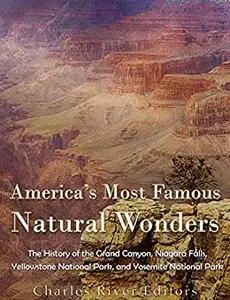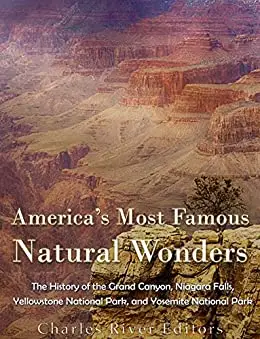America’s Most Famous Natural Wonders: The History of the Grand Canyon, Niagara Falls, Yellowstone National Park, and Yosemite National Park by Charles River Editors
English | February 21, 2017 | ISBN: N/A | ASIN: B06WVLM3BC | 237 pages | EPUB | 7.46 Mb
English | February 21, 2017 | ISBN: N/A | ASIN: B06WVLM3BC | 237 pages | EPUB | 7.46 Mb
*Includes pictures
*Includes contemporary accounts and descriptions of the natural wonders
*Includes online resources and a bibliography for further reading
*Includes a table of contents
Even for those who have never seen it, the Grand Canyon is perhaps the most appreciated and remarkable feature of the American landscape. Indeed, the Grand Canyon has been amazing Americans since explorers first started venturing into the area in the mid-19th century. On one expedition, May Humphreys Stacey wrote in his journal of "a wonderful canyon four thousand feet deep. Everyone (in the party) admitted that he never before saw anything to match or equal this astonishing natural curiosity." Cut through by the Colorado River over the course of millions of years, the Grand Canyon is a popular destination spot that attracts millions of tourists annually, and what they come to see can be found nowhere else on the planet. Whether they ride donkeys across steep ledges or visit old Pueblo settlements in the area (which the natives themselves considered a holy site), awe-inspiring spectacles abound. As Jack Schmitt put it, “It's like trying to describe what you feel when you're standing on the rim of the Grand Canyon or remembering your first love or the birth of your child. You have to be there to really know what it's like.”
North America is full of natural wonders, but few inspire as much awe as Niagara Falls, the continent’s most famous waterfalls. Comprised of three separate waterfalls (Horseshoe Falls, American Falls, and Bridal Veil Falls), Niagara’s falls can boast of the fastest flow rate in the world, dropping 6 million cubic feet of water every minute from as high as 185 feet. Situated on the border between the United States and Canada, Niagara Falls is not just a prime tourist spot but a source of hydroelectric power that attracted scientists like Nikola Tesla who hoped to harness the waterfalls’ energy. In fact, Niagara Falls is so powerful that it is eroding the ground under it, to the extent that it will cease to exist in about 50,000 years.
Few wonders remain unspoiled by man as much as Yosemite National Park, a 750,000 square acre park near the Sierra Nevada mountain range. Despite being inhabited by people for nearly 3,000 years, the relatively remote spot helped ensure that even as America expanded west, the Yosemite area avoided being settled or exploited like so many other areas on the frontier. Although it is a World Heritage Site and has been visited by millions of people, nearly the entire park remains wilderness, replete with features like waterfalls, giant sequoia groves, mountains, and some of America’s most impressive granite cliffs.
While Old Faithful and other geysers remain the park’s most popular features, Yellowstone offers a vast array of diversity, not only among wildlife but within the land itself. Yellowstone is home to mountains, rivers, canyons, lakes, forests, waterfalls, and North America’s largest supervolcano, which remains active underneath Yellowstone Lake. While all of this attracts millions of tourists, Yellowstone is also home to all kinds of animals, from bison to birds, some of which are endangered species protected within the park. Established by President Ulysses S. Grant, Yellowstone is one of America’s most ambitious and crucial conservation areas, and nearly 150 years later, officials still try to balance the interests of everyone and everything involved.



